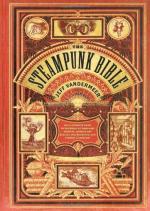|
This section contains 669 words (approx. 3 pages at 300 words per page) |

|
Shortly after the first balloon flights in the late 1700s, people began working on ways to steer the new invention. Some suggested sails, others advocated flappers, while still others wanted to try hand-cranked propellers. None proved practical because they could not generate sufficient power.
In 1852, however, the Frenchman Henri Giffard built and flew the first powered aircraft. He hung a three-horsepower steam engine with a propeller below the balloon, which he shaped like a cigar to move more easily through the air. His control, however, was very poor, and he could only go aloft on the most windless days.
Despite the experimentation of Giffard and others, steerable balloons did not become truly successful until the arrival of compact internal combustion engines in the late 1800s. German engineer Paul Haenlein was the first to fly an airship powered by such an engine, and in 1883 Albert and Gaston Tissandier were...
|
This section contains 669 words (approx. 3 pages at 300 words per page) |

|


